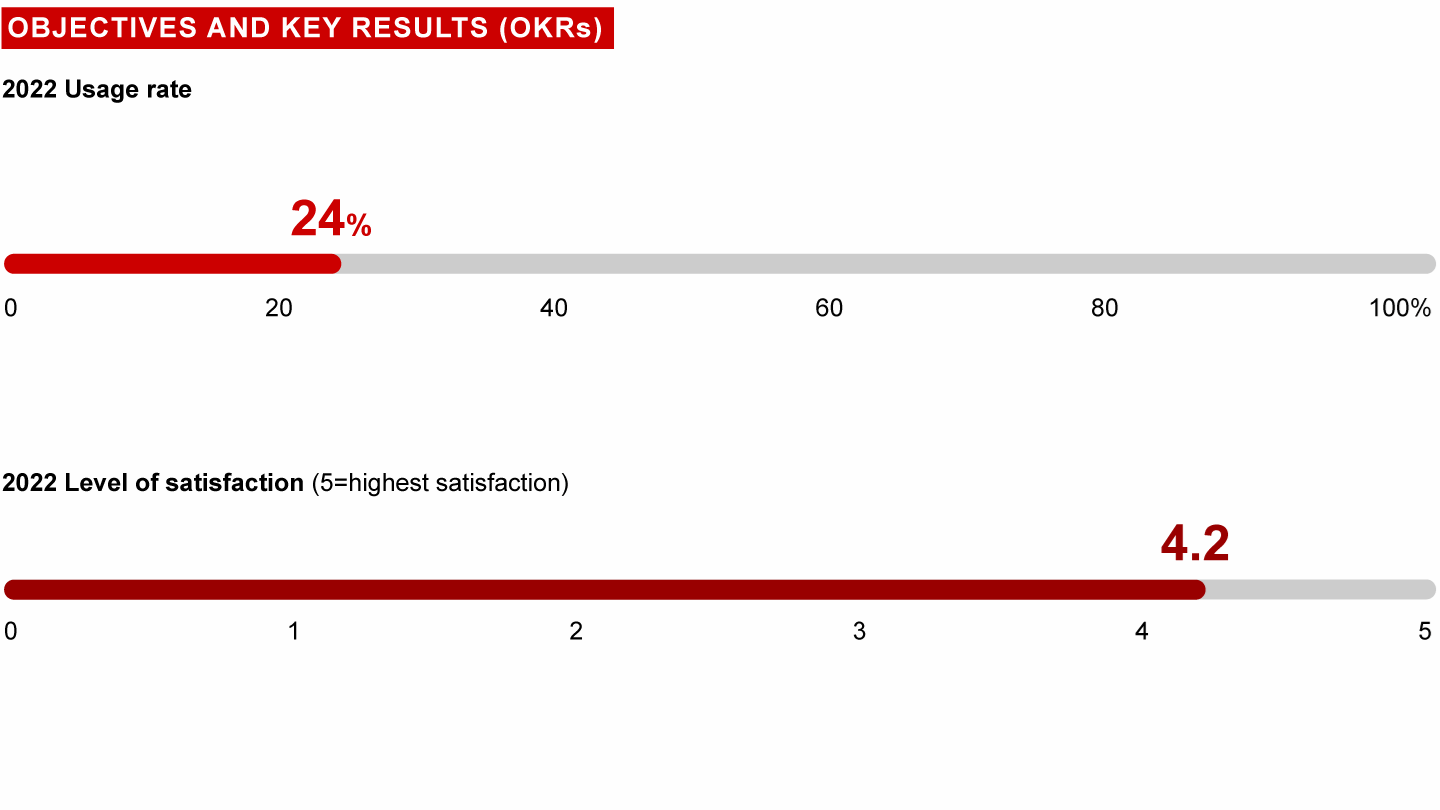Management Tools
What Are Objectives and Key Results?
Objectives and Key Results (OKRs) are a goal-setting framework used by organizations to clarify what to work on and how to measure progress.
The OKR process begins with setting the Objective, a qualitative, action-oriented statement of what the company aims to achieve. The Objective is written as an aspirational statement describing a strategic goal such as “Have the fastest and most reliable delivery in the industry.”
Key Results are measurable, outcome-based steps toward achieving the Objective. They are quantitative statements that will be used to determine progress against the Objective. For example, “Decrease average delivery time to 2 days from 3.5.” Typically, there are three to five Key Results per Objective.
Usage and satisfaction among survey respondents


OKRs can be used to set goals for an enterprise, business unit, function, team, or individual. The company’s overall strategic priorities guide the Objectives at each level, but companies should avoid a purely top-down process to cascade OKRs. Instead, they should also incorporate bottom-up feedback from those closest to the company’s customers and capabilities. If OKRs are implemented in related parts of the organization, companies should establish processes and adopt tools to facilitate the sharing and aligning of OKRs.
Once set, OKRs should be reviewed frequently. Monthly or quarterly, employees should reflect and score OKRs. OKRs should also influence key decisions, such as funding decisions.
How Are Objectives and Key Results Implemented?
First, leaders must set the Objective. To do this, leaders must:
- Understand the organization’s purpose, mission, and vision
- Assess the company’s current performance
- Define the problems that are holding the company back from achieving goals
- Identify a focus area for improvement, an important problem to solve first
- Articulate the problem to solve in a single, aspirational sentence
The next step is to define three to five Key Results. To do this, leaders should:
- Assess the starting point to set an appropriate aspiration
- Determine baseline level considering availability of data and reliability of source
- Articulate the results of solving the problem, not activities
Related Topics
What Are the Common Uses of Objectives and Key Results?
Objectives and Key Results processes are often implemented to:
- Focus employees on the most important outcomes
- Track progress toward goals more frequently
- Increase transparency and accountability
- Inspire and empower employees
- Inform resource allocation and budgeting
- Improve the performance of the organization

Management Tools & Trends 2023
On the 30th anniversary of our survey, managers seem surprisingly upbeat.